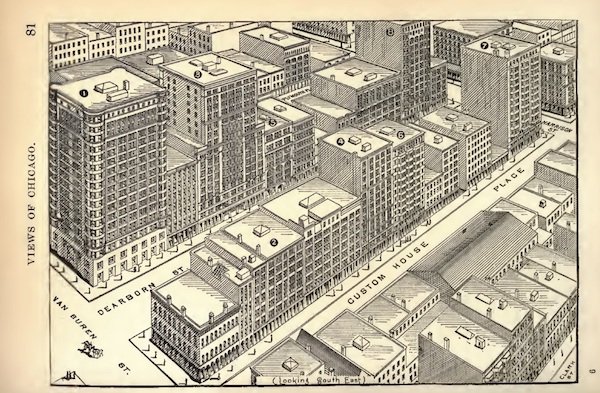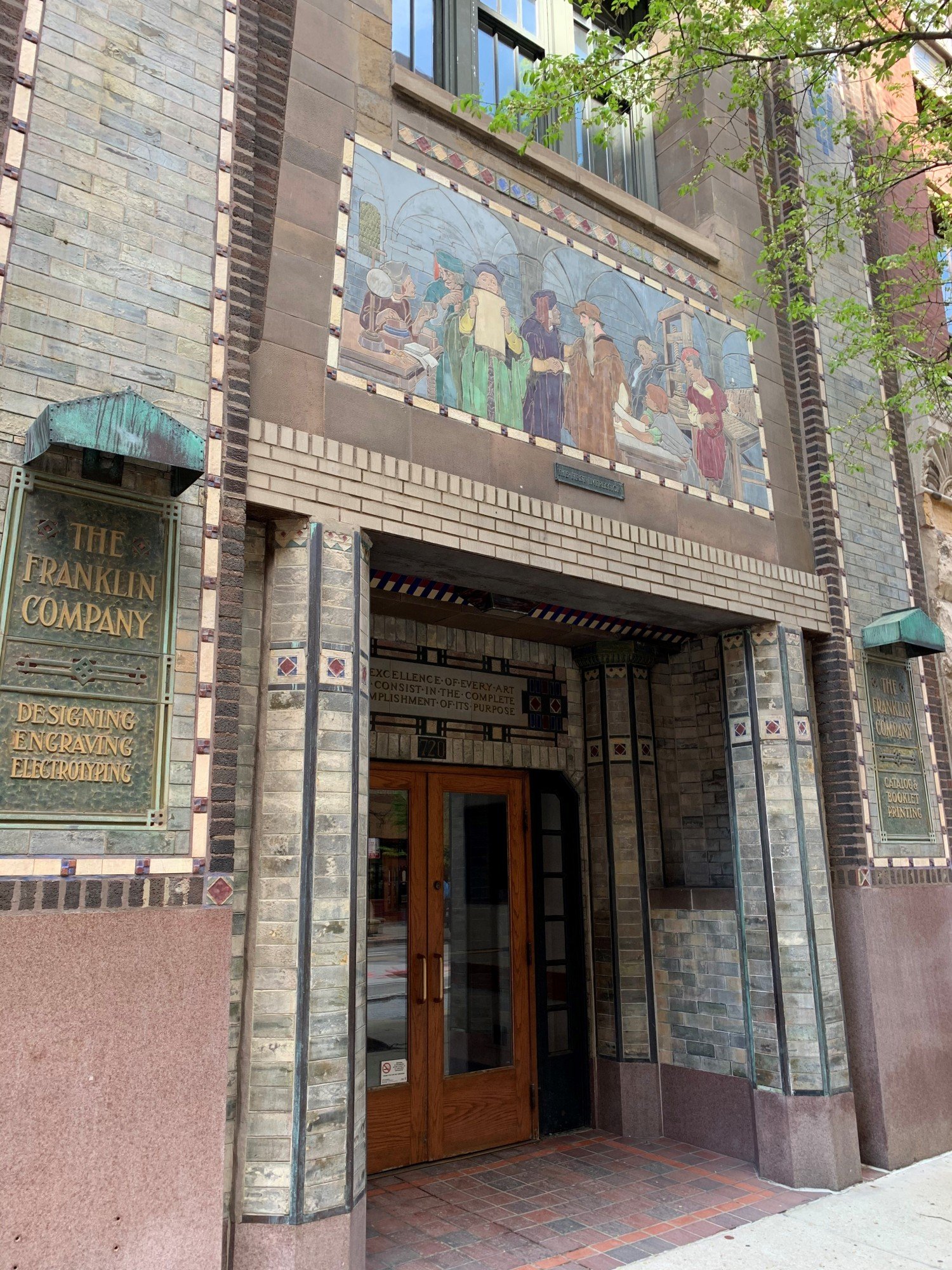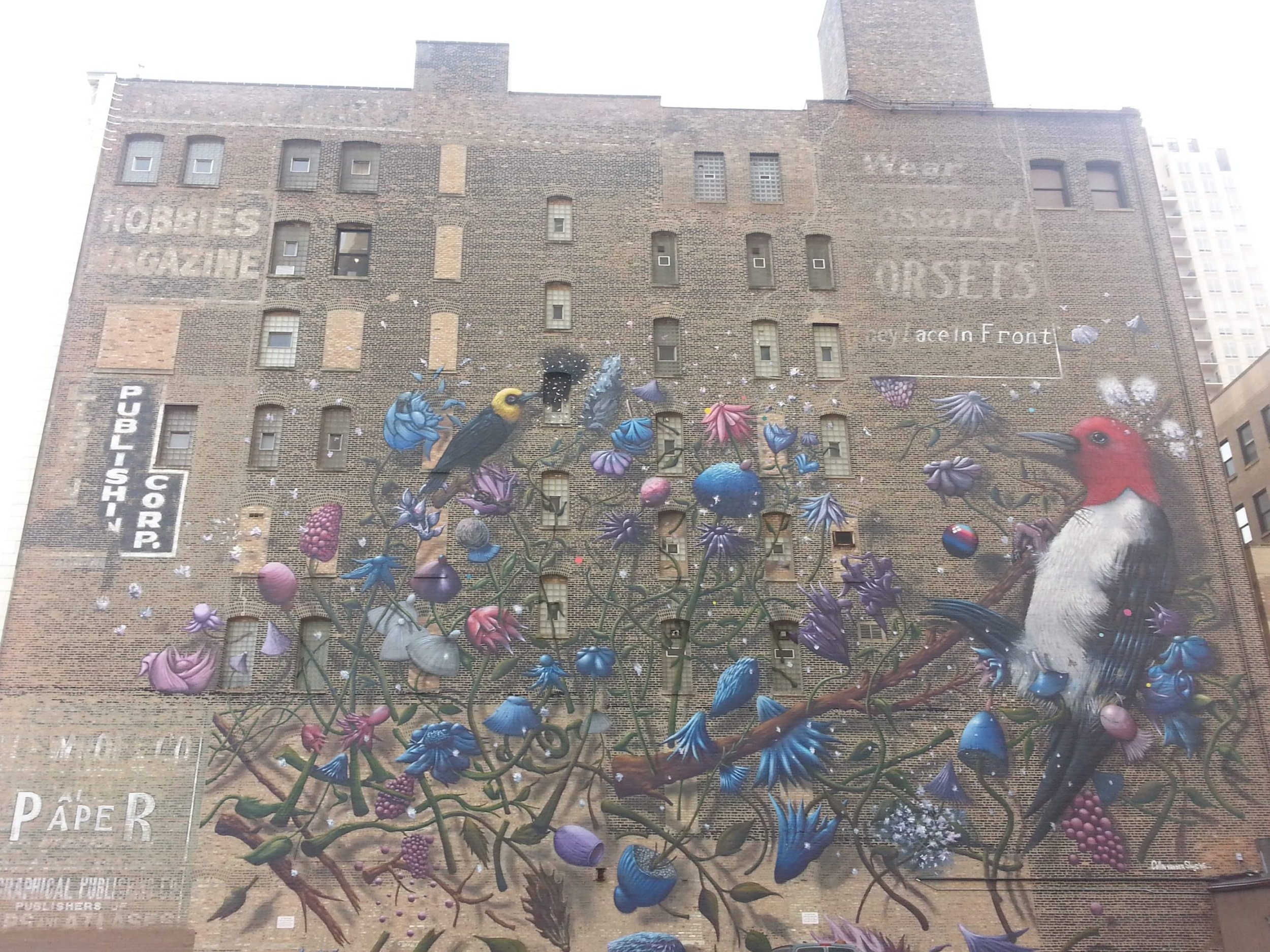Communication is key! Printer’s Row in Chicago is all about the written word. This impressive grouping of 18th century high rises is an important display of the business of linguistic culture. This evocative section of our city—and the iconic painted ads that decorate the brick walls—harken back to different days of Chicago.
Edwardo’s Natural Pizza ad on a historic Printer’s Row building (Source: Chicago Architecture Jyoti)
Why is it called Printer’s Row?
Nestled in Chicago’s South Loop neighborhood—in between the Ida B. Wells tollway, the Chicago River, and Polk Street, to be precise—is printer’s row, standing as a solid reminder of an industry that was big business in the days of fledgling capitalism and beyond. It was here that publishers, printers, bookbinders, and typesetters worked tirelessly to supply the Midwest with written material. Starting in the 1880’s and continuing to the 1950’s, printer’s row pumped out books, pamphlets, magazines, newspapers, advertising material, bibles, dictionaries…you name it.
A drawing of the area from 1893. (Source: Chicago Mag)
The later years of Printer’s Row. (Source: Site-design)
Shutting off the presses
With the construction of the expressway in the mid-twentieth century, distribution became more accessible and printing firms moved out of Printer’s Row. No longer did books have to travel through Dearborn Station! With time, this section of Chicago saw the same urban blight as many areas in the 60’s and 70’s, and finally was reimagined as a residential area. Today, loft apartments with high ceilings and great views comprise the majority of the row.
The terra cotta depiction of the Gutenberg Press on the Franklin Building in Printer’s Row. (Source: Architecture.com)
Ionic ads
Chicago’s “ghost signs” are a special glimpse into the days of yore. In Printer’s Row, there are a few visual cues to the bygone era.
Ads for paper, publishing, magazines, and corsets, all on one building decorated with a new mural. (Source: Chicago Detours)
An ad for a Federal Savings in Printer’s Row, Chicago. Source: Flickr)
An ad for the Bristol Hotel. (Source: Chicago Detours)
Bonus fact
Did you know there is a network of secret tunnels under our very own Printer’s Row? Indeed, a system of tunnels was built in 1904 to subvert the congested streets of downtown Chicago. Would be nice, right? However, this wasn’t exactly a commuter environment. This network connected warehouses, offices, and freight with locomotive cars for shipping and distribution purposes only. The tunnels were abandoned in the 1950’s.
Collars and shirts are faintly advertised on this brick wall in Printer’s Row. (Source: Pinterest)
Printer’s Row. (Source: Block Club Chicago)









